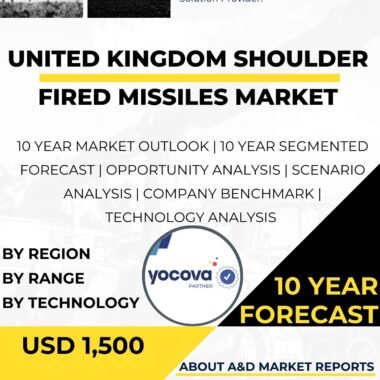Description
Overview
The Brazil Shoulder Fired Missiles Market is crucial for enhancing the country’s defense capabilities, equipping infantry with advanced firepower and anti-armor solutions. Shoulder-fired missiles, or man-portable anti-tank guided missiles (ATGMs), are lightweight systems designed to destroy armored vehicles and fortified positions. As Brazil tackles diverse security challenges and modernizes its armed forces, this market has gained prominence.
Market Growth and Strategic Importance
The Brazil Shoulder Fired Missiles Market has seen steady growth due to the country’s commitment to strengthening infantry forces. Facing threats like asymmetrical warfare, terrorism, and armored incursions, Brazil equips troops with modern missile systems to boost combat effectiveness and neutralize armored targets.
Key Drivers
The market grows due to the need to counter evolving armored threats. As adversaries modernize their armored fleets, Brazil invests in advanced shoulder-fired missiles to penetrate modern armor and defeat reactive systems, maintaining a competitive edge. Additionally, Brazil pursues technological self-reliance by developing domestic missile systems, reducing foreign dependency and fostering its defense industry, which also creates high-tech jobs.
Role in Asymmetrical Warfare
The market’s expansion is driven by the role of shoulder-fired missiles in asymmetrical warfare and counter-insurgency. These missiles provide infantry with lightweight, potent solutions to engage non-state actors and improvised armored vehicles, addressing unconventional threats effectively.
Applications Across Defense Domains
The Brazil Shoulder Fired Missiles Market enhances various defense domains. In infantry operations, these missiles enable soldiers to engage armored vehicles and fortified positions from a safe distance, even in adverse conditions. Special forces benefit from portable anti-armor capabilities for precision operations. Additionally, missiles with infrared homing or fire-and-forget systems bolster air defense against low-flying aircraft and helicopters.
Challenges
The market faces challenges, including high costs for developing and maintaining advanced missile systems, requiring significant investments in research, production, and training. Regulatory hurdles, such as international export controls, limit access to cutting-edge technologies. A shortage of skilled personnel for operating and maintaining these systems also hinders growth.
Future Growth
The Brazil Shoulder Fired Missiles Market is poised for continued growth as security challenges evolve. Demand for advanced missiles will remain strong, supported by investments in research, technology transfers, and training facilities.
Conclusion
The Brazil Shoulder Fired Missiles Market is vital for strengthening infantry capabilities and countering armored threats. These missiles enhance firepower, enabling effective engagement of enemy targets. Growth is driven by Brazil’s focus on technological self-reliance and innovation. Overcoming challenges in cost, regulation, and skilled personnel will unlock the market’s potential for bolstering national security.




